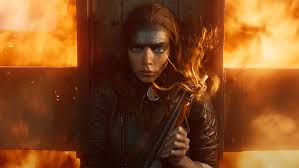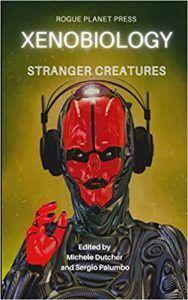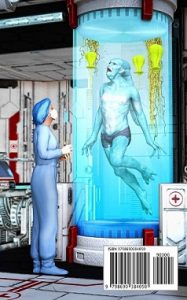
© Warner Bros. Pictures / Kennedy Miller Mitchell
What a strange beast Furiosa: A Mad Max Saga (2024) is. Yes, it’s a Mad Max movie, directed and co-written by the franchise’s mastermind George Miller. But it’s one (almost) devoid of Mad Max. Instead, it concentrates on Imperator Furiosa, the formidable warrior-woman played by Charlize Theron who partnered the title character in 2015’s Mad Max: Fury Road. Furiosa fills us in on her backstory, from her childhood to early womanhood. Thus, it’s a prequel to Fury Road and a discombobulating departure from the customary format of the Mad Max films.
If you had to sum up the structure of the earlier four movies in one word, that word would be linear. Things just barrelled along in a straight line. Indeed, the two best ones, Mad Max II (1982) and Fury Road, were basically ongoing vehicle chases, with plot and characterisation having to scramble on board during the brief moments when people’s feet eased on the accelerators. Not that I’m knocking them. Mad Max II is one of my favourite films of the 1980s and I consider Fury Road one of the best films of the 21st century.
But with Furiosa, Miller – bravely or foolishly, depending on your point of view – abandons the formula that’s hitherto served him so well and presents a movie with other things besides big, metallic, wheeled things hurtling after and crashing into one another. There are periods of quiet and calm, where the emphasis is on dialogue, characterisation and violence-free drama rather than on hectic, in-your-face action. Parts of it even get a bit slow.
Which isn’t to say Furiosa lacks action. It begins with an edge-of-your-seat (if small-scale) chase, and later there are two lengthy action set-pieces that rank among the most thrilling the franchise has produced, even if one of them incorporates a bit too much CGI. Overall, though, comparing one of the earlier Mad Maxes with this entry is like – to cite two examples from a sub-genre that heavily influenced the series originally, the spaghetti western – comparing Sergio Leone’s lean, taut A Fistful of Dollars (1964) with his sprawling epic Once Upon a Time in the West (1968).

© Warner Bros. Pictures / Kennedy Miller Mitchell
No, I’m not claiming that Furiosa is as good as Once Upon a Time in the West (one of my top half-dozen movies ever, incidentally). I also think it falls short of the greatness achieved by Fury Road. But I still found it pretty impressive. Before I discuss the movie in detail, though, I should warn you – from here on there will be spoilers.
The film gets going with the afore-mentioned chase. Some scumbag bikers abduct little Furiosa (Alyla Browne) from her community in the Green Place, a Garden of Eden-like hideaway that’s somehow survived the apocalypse that’s ravaged the rest of the earth in the Mad Max version of the future. Her mother (Charlee Fraser) pursues them into the Wasteland and the scumbag bikers are killed one by one, but not before the last of them manages to deliver Furiosa to Dementus (Chris Hemsworth), leader of a gang with a self-explanatory name, the Biker Horde.
A subsequent attempt to rescue Furiosa results in the mother’s death and Dementus keeps the little girl, partly as his gang’s mascot, partly as a surrogate daughter. “Do not look away, you mustn’t look away!” he urges her while he crucifies her mother in front of her, believing that the trauma will toughen her up and make her better suited to the Wasteland. He’s obviously a dad who believes in the ‘school of hard knocks’ approach to raising kids. He also muses, “When things go bonkers, you have to adapt.”
Later, he and his Horde stumble across the Citadel that figured, or will figure, in Fury Road and come face to face with the Citadel’s implacable, pustular ruler Immortan Joe. Here, Joe is played by Lachie Hulme. Hugh Keays-Byrne, the actor who played him in Fury Road (and also played the franchise’s original villain, Toecutter, back in 1979’s Mad Max) passed away in 2020. The Biker Horde manages to capture the Citadel’s satellite-settlement Gastown, responsible for producing the fuel for Joe’s vehicles. After some hard bargaining, Joe reluctantly cedes control of Gastown to Dementus, but demands some concessions from the biking warlord in return. These include him taking custody of Furiosa.

© Warner Bros. Pictures / Kennedy Miller Mitchell
Born in the healthy environs of the Green Place, Furiosa is genetically undamaged and Joe, desperate for some normal-bodied and able-minded offspring, fancies her as a future wife. As we know from Fury Road, he has a squad of young wives locked away for breeding purposes, though the results have been disappointing so far – as evidenced by the two sons he’s acquired, the hulking, thick-as-mince Rictus Erectus (Nathan Jones) and the psychotic Scabrous Scrotus (Josh Helman). Not keen on the idea of ending up a spouse to Immortan Joe, Furiosa escapes from his harem, disguises herself as a boy, pretends to be mute and finds employment in the Citadel’s garages.
A few years later, after various adventures, and now played by Anya Taylor-Joy, Furiosa becomes apprenticed to the tough but kindly Praetorian Jack (Tom Burke), driver of the War Rig, the giant truck that’s the pride of Joe’s vehicular fleet. “You have about you a purposeful savagery,” Praetorian Jack informs her, which in the Wasteland is as close to a compliment as you can get.
Praetorian Jack and the now Praetorian Furiosa gradually bond, to the point where Jack agrees to help her return to the Green Place. But bigger events get in their way. Namely, Dementus’s running of Gastown becomes such a disaster that Immortan Joe and his allies vow to get rid of him, even if this means a full-scale war raging in the Wasteland…
One thing I liked about Furiosa was the chance to see certain characters from Fury Road again. Not just Immortan Joe, but subsidiary villains like Rictus Erectus, the People Eater (John Howard), the Bullet Farmer (Lee Perry, replacing the original actor Richard Carter, who died in 2019) and the Organic Mechanic (Angus Sampson), who’s the nearest thing in the Wasteland to a GP and has the thankless task of delivering Joe’s stillborn and / or mutant kids. But what pleased me most was a fleeting reappearance by the Doof Warrior, the goon who rides in front of a giant wall of speakers whilst playing a splendid, flamethrowing electric guitar.

© Warner Bros. Pictures / Kennedy Miller Mitchell
Furiosa presents us with some cool new characters as well, mostly in Dementus’s entourage. There’s the piratical Rizzdale Pell (Lachy Hulme in a second role) who, unlike normal movie pirates, doesn’t bother to conceal an empty eye-socket with an eyepatch. Also facially disfigured is the zombie-like Mr. Norton, who’s actually a Ms. and is played by Elsa Pataky, Chris Hemsworth’s real-life wife, no less. And I was impressed by the Octoboss (Goran D. Kleut), a satanic figure clad in black, horned armour who rides / flies into battle on a motorbike-cum-kite, trailing a long, black, tendrilous parachute behind him.
Dementus also employs two cheerleaders. He has a Gollum-like weirdo called Smeg (David Collins) acting out his ever-changing moods in a series of strange, performative dances. And he has a warm-up man called the History Man (George Shevstov) who warns potential adversaries about his boss’s ‘congress of destruction’, i.e., the thousands of motorbikes massed behind him. The History Man additionally serves the gang as a bard and as an archivist of knowledge, stories and language, which he has tattooed in tiny writing all over his body. He’s asked to dredge up appropriate words from the mostly-forgotten lexicon of English to mark special occasions: “History Man! A word-burger if you please!” And he provides the film with its narration, which implies the saga of Furiosa has been added to this anarchic society’s repository of legend and lore.
But among the new characters, the biggest star is Dementus himself. Chris Hemsworth obviously relished the opportunity to set aside his goody-two-shoes image as Thor in the Marvel cinematic universe and play somebody gloriously, evilly unhinged. While cunning and ruthless enough to make a credible post-apocalyptic warlord, there’s also a touch of ridiculous, Spinal Tap-style heavy metal-ness about him. This means that, ultimately, he’s never going to be smart enough to defeat Immortan Joe, still Top Dog when Fury Road rolls around. He’s merely likely to cause a lot of damage along the way. Inevitably, Dementus gets the best lines. He goadingly demands of Furiosa, “Do you have it in you to make it epic?” or “Where were you going, so full of hope? There is no hope!” Best of all is a muttered aside when a minion disputes his orders: “Hmm, questioning my boss-ority…”

© Warner Bros. Pictures / Kennedy Miller Mitchell
It says a lot for the more measured performances by Anya Taylor-Joy and Tom Burke that they manage to make their presences felt, and Hemsworth doesn’t walk away with the film.
With so many good elements, then, why do I feel Furiosa is less effective than Fury Road? Well, it’s a bit too long and, while earlier parts of the film are languidly paced, there’s rather too much happening, too much Machiavellian scheming and double-crossing going on, in its later stages. Also, the franchise’s long-term fans will be frustrated that the war between Dementus and Irmmortan Joe, when it finally arrives, is represented only by a brief montage and a voice-over from the History Man. Instead, the film’s focus becomes personal. It zooms in on Furiosa pursuing and confronting Dementus over her mother’s long-ago murder. I can see what Miller was trying to do, and respect his bravery in doing it, but I’d have preferred things to end with a bigger bang.
Still, after seeing it a few days ago, I haven’t stopped thinking about Furiosa. Things about it that didn’t occur to me in the cinema have occurred to me since. For example, the nature of Praetorian Jack’s relationship with Furiosa is kept vague and at the time I wasn’t sure if it was supposed to be a romantic one. Now I see him more as being a father-figure to her, which nicely fills the void left by her mother’s death. I also appreciate, with hindsight, how the script uses peaches – yes, peaches – as a motif. Furiosa is seen picking them at the start, her mother gives her a peach-pit as a memento shortly before she dies, and the same pit has a bearing on what Furiosa does to Dementus at the end (at least, according to the story she tells the History Man).

© Warner Bros. Pictures / Kennedy Miller Mitchell
And during a Wasteland sequence that’s particularly brutal and traumatic for Furiosa, Miller’s camera leaps back into the surrounding mountains for a moment, and we see a familiar silhouette watching events from afar, next to his trademark V8 Interceptor. I wonder now if Mad Max’s cameo is meant to show he has a connection with Furiosa even before he meets her in Fury Road. Does what he observes here remind him of the loss of his family in the original movie?
Despite its quality, Furiosa has done badly at the box office. I suspect many blokes who enjoy action movies chose to skip this one because it wasn’t about Mad Max but about – ugh! – a girl. Conversely, it obviously didn’t appeal to family audiences. About a girl it may be, but Furiosa is also the most brutal Mad Max film yet. It’s got the highest body-count and, while the franchise has always managed to be violent without wallowing in gore, there are more moments than usual where bullets strike faces, flamethrowers torch bodies, throats get slashed and body-parts are severed. Sadly, Furiosa‘s underperformance has cast doubt on whether George Miller’s planned sixth entry in the franchise, Mad Max: The Wasteland, will ever be filmed.
To borrow two of Dementus’s quotes… It’s a pity that after Furiosa’s box-office flop, people are questioning Miller’s boss-ority. Because he still has in him to be epic.

© Warner Bros. Pictures / Kennedy Miller Mitchell


